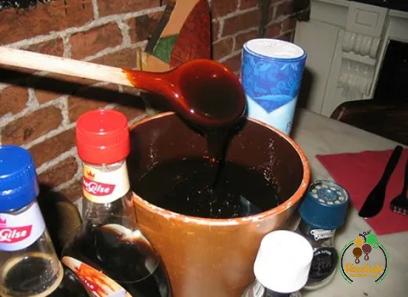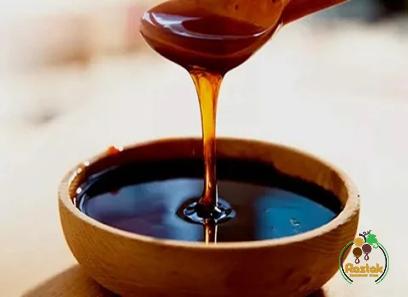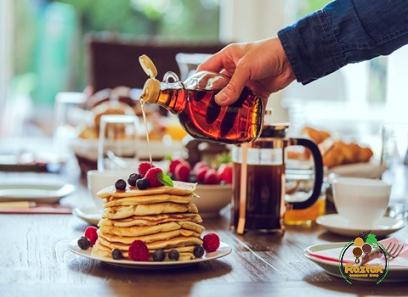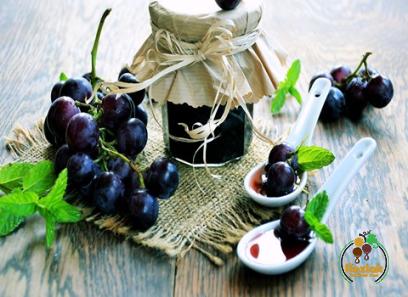Golden raisins are a favorite healthy snack enjoyed by many people around the world. However, it may come as a surprise to some to discover that these golden treats can sometimes turn brown. In this article, we will explore the reasons behind this discoloration process and how it affects the quality and taste of golden raisins. Tip 1: Understanding the Natural Transformation: Golden raisins are obtained by drying yellow or green grapes, resulting in their characteristic golden hue. However, due to certain natural processes and chemical reactions, these raisins may turn brown over time, altering their visual appeal.

.
 Tip 2: The Role of Oxygen: One of the key factors that contribute to the browning of golden raisins is the presence of oxygen. When raisins are exposed to air, particularly in an unsealed or poorly sealed package, oxygen reacts with the compounds in the raisins, leading to the browning effect. This process is called enzymatic browning. Tip 3: Enzymatic Browning and Polyphenols: Enzymatic browning occurs when an enzyme present in the fruit (such as polyphenol oxidase) reacts with phenolic compounds naturally found in raisins. These compounds are known as polyphenols and are responsible for the antioxidant properties of raisins. When they undergo oxidation, they produce brown pigments, leading to the browning of the raisins.
Tip 2: The Role of Oxygen: One of the key factors that contribute to the browning of golden raisins is the presence of oxygen. When raisins are exposed to air, particularly in an unsealed or poorly sealed package, oxygen reacts with the compounds in the raisins, leading to the browning effect. This process is called enzymatic browning. Tip 3: Enzymatic Browning and Polyphenols: Enzymatic browning occurs when an enzyme present in the fruit (such as polyphenol oxidase) reacts with phenolic compounds naturally found in raisins. These compounds are known as polyphenols and are responsible for the antioxidant properties of raisins. When they undergo oxidation, they produce brown pigments, leading to the browning of the raisins.
..
 Tip 4: Impact on Quality and Taste: While the color change may be a concern for some consumers, it is important to note that brown golden raisins are generally safe to eat. The browning process does not indicate spoilage or any compromise to the raisins’ nutritional value. However, the browning can affect the overall quality and taste, making the raisins appear less visually appealing and potentially altering their flavor profile. Tip 5: Storage Solutions: To minimize the discoloration of golden raisins, proper storage is essential. Keep them in an airtight container or zipper-sealed bag to safeguard against exposure to oxygen. Refrigerating or freezing golden raisins can also help to slow down the enzymatic browning process, preserving their natural golden color for a more extended period.
Tip 4: Impact on Quality and Taste: While the color change may be a concern for some consumers, it is important to note that brown golden raisins are generally safe to eat. The browning process does not indicate spoilage or any compromise to the raisins’ nutritional value. However, the browning can affect the overall quality and taste, making the raisins appear less visually appealing and potentially altering their flavor profile. Tip 5: Storage Solutions: To minimize the discoloration of golden raisins, proper storage is essential. Keep them in an airtight container or zipper-sealed bag to safeguard against exposure to oxygen. Refrigerating or freezing golden raisins can also help to slow down the enzymatic browning process, preserving their natural golden color for a more extended period.
…
 6: Commercial Raisins Preservatives: In the commercial production of golden raisins, various techniques such as the use of sulfur dioxide or sulphites are employed as preservatives. These additives help to inhibit the enzymatic browning process and maintain the raisins’ golden color for a longer shelf life. Hence, commercially available golden raisins are less likely to turn brown compared to those without preservatives. Conclusion: While golden raisins turning brown may be a natural phenomenon, it can still create confusion and concern for consumers. Understanding the role of oxygen, enzymatic browning, and storage solutions can help mitigate the visual changes and maintain the raisins’ quality. Additionally, being aware of the impact on taste and the preservation methods employed in commercial production can aid in making informed purchasing decisions. So, rest assured, the brown color does not compromise the nutritional benefits of golden raisins, and these dried fruits can still be enjoyed as a healthy snack.
6: Commercial Raisins Preservatives: In the commercial production of golden raisins, various techniques such as the use of sulfur dioxide or sulphites are employed as preservatives. These additives help to inhibit the enzymatic browning process and maintain the raisins’ golden color for a longer shelf life. Hence, commercially available golden raisins are less likely to turn brown compared to those without preservatives. Conclusion: While golden raisins turning brown may be a natural phenomenon, it can still create confusion and concern for consumers. Understanding the role of oxygen, enzymatic browning, and storage solutions can help mitigate the visual changes and maintain the raisins’ quality. Additionally, being aware of the impact on taste and the preservation methods employed in commercial production can aid in making informed purchasing decisions. So, rest assured, the brown color does not compromise the nutritional benefits of golden raisins, and these dried fruits can still be enjoyed as a healthy snack.











Your comment submitted.